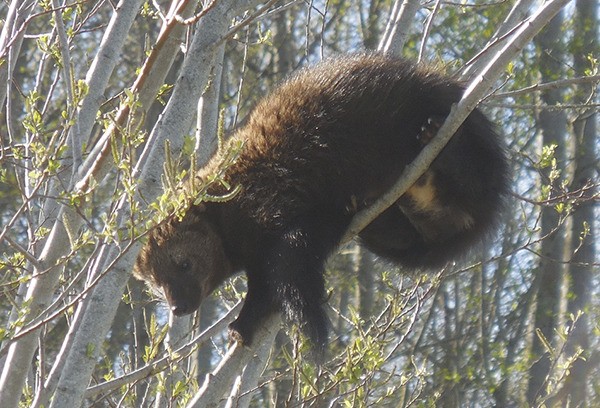A fisher was spotted evading coyotes near the mouth of the Dungeness River in late March by Matt Heins, a Sequim resident and manager of Dungeness Farms Inc.
“It’s pretty surprising because that’s not typical fisher habitat,” Patti Happe, Olympic National Park wildlife biologist, said.
Fishers tend to live in forested areas, Happe said, but because it’s in the midst of their breeding season it could be a male in search of a female.
Weighing up to 13 pounds, fishers belong to the weasel family and once thrived within Washington. However, by the mid-1900s they were extirpated statewide mainly because of over-trapping and habitat loss.
In response, the Washington Fish and Wildlife Commission listed the fisher as an endangered species in Washington in 1998.
The first effort to reintroduce fishers in Washington took place in Olympic National Park. Between 2008-2010 a total of 90 fishers were released at remote areas within the park.
Through ongoing collaboration between federal and state agencies, tribes and nonprofit organizations, scientists like Happe have been studying the reintroduction and evaluating its success.
Happe and colleagues use a grid system to guide them as they look for and monitor the fishers, but incidental reports outside of their study sites, like that from Heins are helpful, too.
“It helps to fill in the picture because we can’t be everywhere,” she said.
In hopes of retrieving a DNA sample of the fisher seen near the Dungeness River mouth, Happe has set up a camera and associated hair snare. By comparing the DNA from the original fishers released and that from the found individuals, scientists will be able to determine whether an individual is one of the original 90 released, Happe explained.
If the found individual is an offspring of the released fishers, they’re able to identify its parents.
“This is helping us figure out how many founders are still alive, how many founders reproduced and how many young they had — so it gives us an idea of the reproductive success,” she said.
Although it’s still early to make any firm conclusions about the overall reintroduction effort, Happe is hopeful.
“I’m encouraged that we’re still finding them and their young,” Happe said.
Beyond finding their young, scientists recently found the second granddaughter.
“So not only were they (the released fishers) able to survive and reproduce, but their offspring also were able to reproduce,” she said.
Applying the lessons learned from the fisher reintroduction underway on the Olympic Peninsula, a similar reintroduction effort is taking place in the Cascade Mountain range.
To report a fisher sighting, contact Happe at patti_happe@nps.gov or 565-3065.
For more information on the fisher reintroduction, visit www.nps.gov/olym/learn/nature/fisher-reintroduction.htm.
Reach Alana Linderoth at alinderoth@sequimgazette.com.



